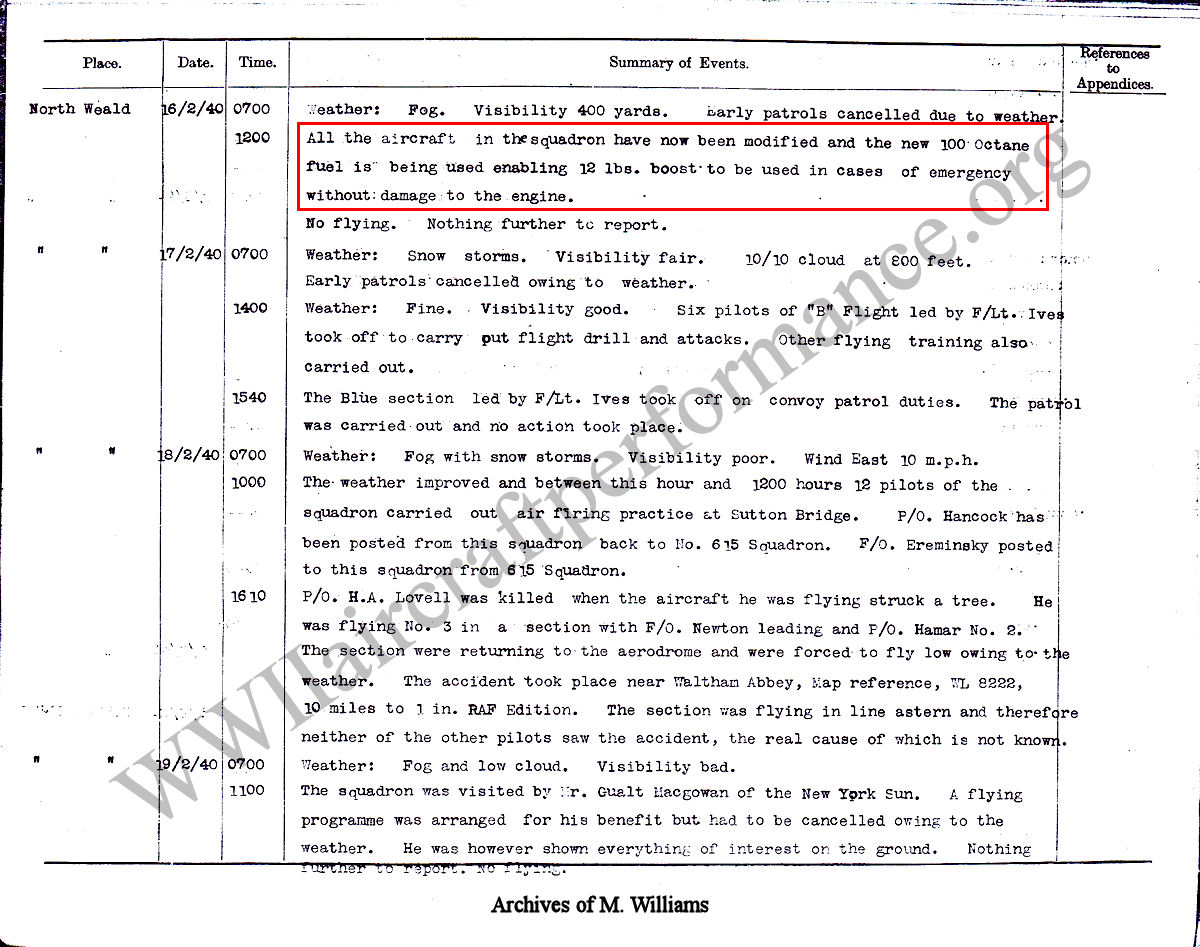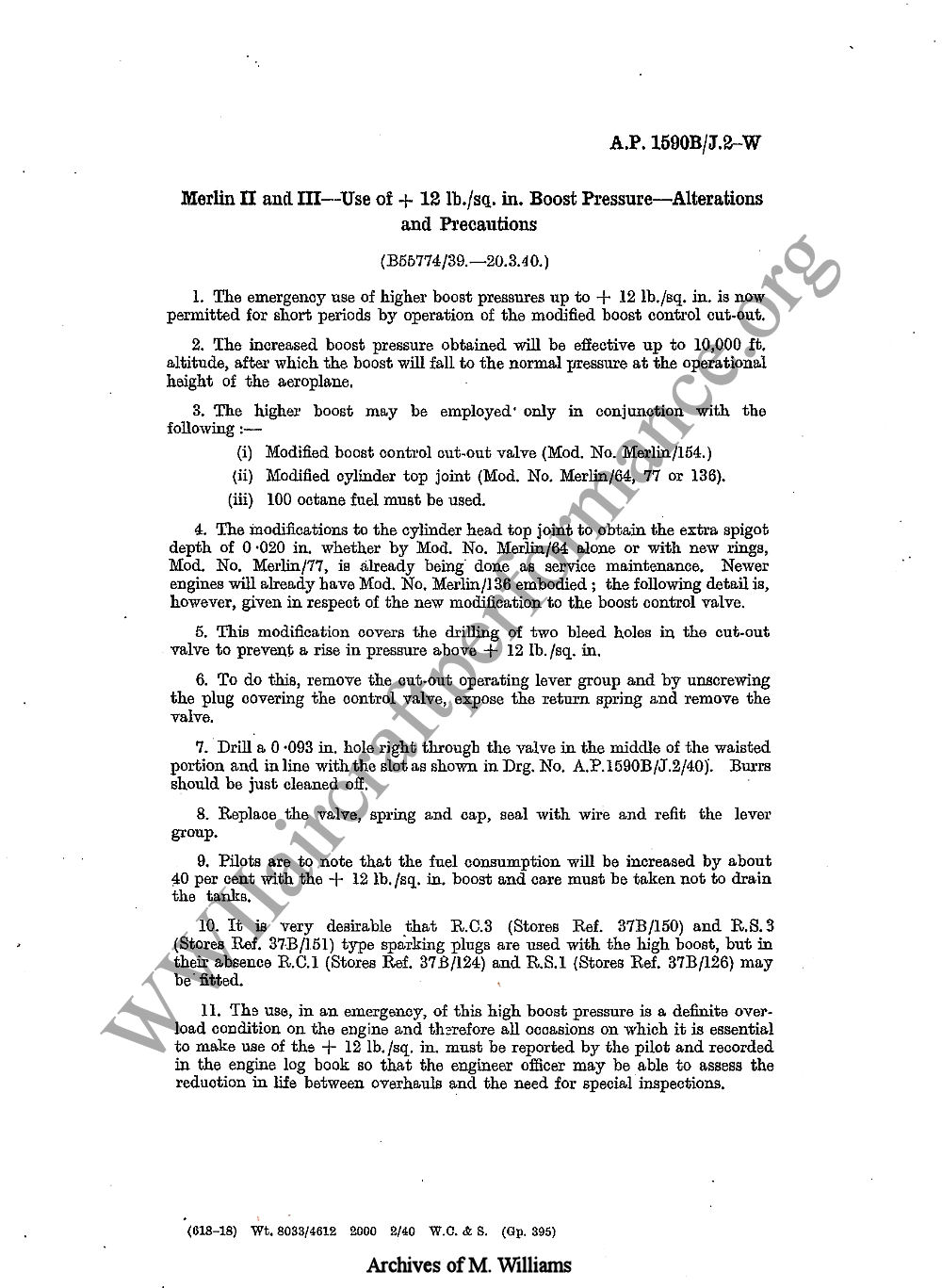
 |
|
#51
|
|||
|
|||
|
Quote:
For example: 16 February 1940 Operational conversion to the modification  20 March 1940 Publication of the modification  Quote:
|
|
#52
|
|||
|
|||
|
I'm with ICDP on this one. Options should be there to accommodate everyone, that includes the players who want to fly a more "by the book" recreation of WWII air combat that follows real-life constraints a bit closer.
The issue is not so much if an engine could run flat out for a few hours, but the fact that there are no underlying features in the sim yet to model the chain of penalties and drawbacks that would occur in reality when doing so. We jump into a fresh airframe every time we spawn and unless there is some continuity between sorties, it's a bit too much of gaming the game for my taste to be able to easily exceed the limits. On the other hand, if we get a complex dynamic campaign engine that can be used both offline and online, one that tracks the supply and strategic side of things then by all means i'm in. I could be pushing the engines all i want, but if the lufties bomb the convoy carrying the spare parts to my base i would have to take off on the next sortie with an abused, inadequately serviced engine and that might give me trouble. That's an entirely different kind of gameplay though than the one which will occur if we opt for selective realism only where it suits us as players. Statistically it might even out (ie, every aircraft would get the same treatment), it just draws a sizable part of the tactical considerations and problems faced by a pilot out of the picture. This is what bothered me most about IL2 as well. Our FMs might have been accurate to the Nth degree, but we were all constantly mucking around with amounts of horsepower that were in reality severely limited in their duration. And since so many parameters of any given FM, no matter how accurate, rest on the amount of available power, the end result is that the entire fight changes and non-realistic tactics are adopted, simply because we can. I'm not preaching to get everyone onto the full real boat, heck i fly with externals on when i'm offline because i like pausing, watching all the pretty effects and the aircraft and taking screenshots. There should always be options to "pull" this piece of software away from sim and more towards game, this is how the series sells and new "converts" join our ranks. I'm just saying that such implementation should be optional and part of the realism settings, not a default across the board change that applies to the highest difficulty settings. Case in point, what ICDP mentioned about the overheat modeling. It's far too forgiving while idling on the ground, to the point that it's sometimes hard to properly warm up the engines and they choke when applying throttle smoothly, forcing the player to do it in steps of "throttle up and wait for the temp to catch up". The most glaring example is the Blenheim which i've taken to studying with a bit of an obsession (i like radial engines In the sim it's the exact opposite. To warm up i step on the brakes and gradually increase throttle with the cowl flaps closed and once i hit the magic 200 degrees of cylinder temps i apply take off power and fully open the cowl flaps. Like i said before, if we get merlins running a constant +12 lbs it won't be long before we get DB601s running a constant 1.45 Ata as well and it will be IL2:1946 all over again: less need to plan ahead and adopt real life tactics, because my magic horsepower is always there for me. |
|
#53
|
|||
|
|||
|
I'm sorry lane, I got that part wrong, I stand corrected. The Merlin Mk XX was used introduced in August, first it was fitted to modified Mk Is made to Mk II standard at the factory, then on the Hurricane Mk II which was introduced to squadron service in September 1940. So it was indeed present in the BoB.
Regardless the salient point still stands in that CoD does not have a flyable aircraft with a Merlin XX. I think it is worth mentioning that the Merlin XII of the Spitfire Mk II introduced a 70/30% water/glycol coolant mix. This new mix improved cooling abilites and was safer than the 100% glycol mix of the earlier Merlin Variants as used in the Mk Ia. Having said that, it was not a magic mixture that = no more overheat. I agree with Seadog that we need +12lbs boost for the RAF fighters, but I dont agree it could be used all day long without potential consequences. Incidentally the Spitfire Mk IIa is already running at +12lbs boost speeds. Last edited by ICDP; 06-06-2011 at 06:02 PM. |
|
#54
|
|||
|
|||
|
Quote:
Quote:
Sorry for going OT there. Last edited by ICDP; 06-06-2011 at 06:15 PM. |
|
#55
|
|||
|
|||
|
Some thought about wear modelling, might as well continue the discussion in a seperate thread, this one is titled "Effect of boost control cutout prior to +12 psi boost modifications"
http://forum.1cpublishing.eu/showthread.php?t=23618
__________________
Il-2Bugtracker: Feature #200: Missing 100 octane subtypes of Bf 109E and Bf 110C http://www.il2bugtracker.com/issues/200 Il-2Bugtracker: Bug #415: Spitfire Mk I, Ia, and Mk II: Stability and Control http://www.il2bugtracker.com/issues/415 Kurfürst - Your resource site on Bf 109 performance! http://kurfurst.org 
|
|
#56
|
|||
|
|||
|
According to Mason in The Hawker Hurricane, Hawker had received 14 Merlin XX engines by June 1940, and from Sept 4 to Sept 30 1940, 32 Hurricane IIs were delivered to operational squadrons. Birtles states that the first Hurricane Mk II was flown on June 11 1940 and the first production Mk II with a 12 gun armament flew in August 1940.
|
|
#57
|
|||
|
|||
|
Quote:
|
|
#58
|
|||
|
|||
|
Quote:
The worst case for cooling is generally likely to be minimum speed at FTH. Above FTH the power decreases in proportion to air density, but the problem is reduced because:
BTW, the last time I tested the Spitfire II it was just wrong, and if anything was faster than it should be with a Merlin XII at +12, with the wrong FTH. Speed is a pretty meaningless metric IMO. It's much better to plot a TAS vs altitude graph and then take the error to be the area of the gap between the lines of real test data and sim data. Of course, this should be an absolute figure, because +ve and -ve errors obviously don't cancel each other out. In the end, this thread wasn't intended to be an argument about +12 boost. It was intended to point out that given that we have 87 octane boost indications, we should have 87 octane boost cutout behaviour, which was very different from 100 octane boost cutout behaviour. IMO it's worth simulating this simply because it's interesting. Obviously we should have 100 octane fuel and +12 boost, but that's for another thread (indeed it's pretty sad that such a thread should be needed at all, but obviously it is). *edited to remove engine wear stuff to Kurfürst's thread* Last edited by Viper2000; 06-06-2011 at 07:00 PM. |
|
#59
|
|||
|
|||
|
Quote:
|
|
#60
|
|||
|
|||
|
Historically, if you were in a Merlin III powered fighter and you needed to use 12lb boost, you did so, and you damned the consequences because staying alive and/or destroying the enemy was more important than explaining away a broken engine. 12lb boost/3000rpm will not cause overheating in level flight. It might cause overheating in prolonged max angle of attack climbs as per Dowding's memo of Aug 1, 1940 but other combat manoeuvres were probably the prime culprit in causing increased engine wear leading to bearing failure, also as per Dowding's memo.
|
 |
|
|